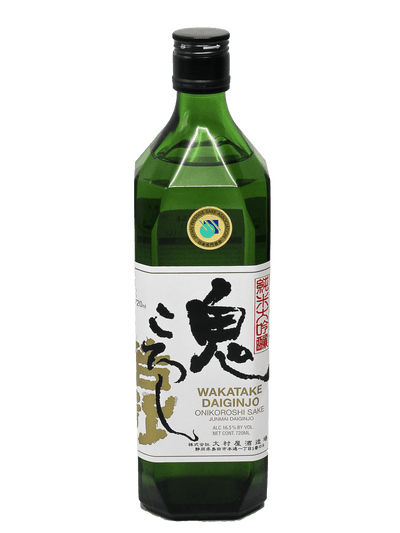Pinot Noir Wine and Chardonnay Wine: More than Meets the Eye

Did you know you can make white wine from grapes with dark pink or even red skins? This is because the color in wine comes mainly from the skins, and in making white wine there is usually very minimal skin contact. If the wine is made by immediately pressing the grapes and removing the skins, this will be transformed into a white wine bottle at the end. If, however, such grapes are crushed, allowed a time of skin contact, and then pressed you’ll have a red wine bottle. So, you’re red wine Pinot Noir may have more in common with your translucent Chardonnay wine than meets the eye!
This is because the Chardonnay grape is a genetic relative of Pinot Noir, and both originate in the same region: Bourgogne (or Burgundy), France. That’s why they’re often referred to as the “Burgundy varietals” and they excel under similar growing conditions. In fact, Chardonnay you get when you order wine online comes from a cross between Pinot noir and Gouais blanc (also known as “Heunisch”) grape varieties. Today, Gouais blanc is not widely grown, but its offspring Chardonnay has conquered the wine world.
Main Characteristics of the Chardonnay Wine Grape
Unlike its parent Pinot Noir, Chardonnay is mainly characterized by its prompt maturation and its great resistance and adaptability to different types of soil. This explains, among other factors, its wide geographical expansion. The Chardonnay grape has a pale yellow color reminiscent of the sun's rays from its region of origin, Burgundy. The wines made from the Chardonnay variety express the essence of the latter in the form of golden and greenish reflections.
This variety presents a harmony of fruit aromas, among which you can appreciate citrus and tropical nuances such as lemon, pear or pineapple. On the palate, Chardonnay wine does not have abundant acidity and offers sweet flavors reminiscent of honey or caramel, and which form an ideal balance with the fruity nuances. Depending on the terroir, Chardonnay wines can also have pronounced minerality; this is common in regions like Chablis. Chardonnay wines stand out for their marked balance, where the protagonists are the nuances and fruity aromas. As Chardonnay grapes are made using the white wine technique, tannins are not a factor.
Main Characteristics of the Pinot Noir Wine Grape
Pinot Noir is a grape variety with very particular characteristics for its cultivation, since it is especially sensitive to the weather, requiring low temperature conditions and, simultaneously, low humidity and wind. In addition to slow maturation and a notable delicate condition (due to its thin skin) vis-a-vis fungal diseases. That is why this variety is so common in cool Burgundy, or in other similar climes in the world such as the Russian River Valley in Sonoma, California, or the Willamette Valley in Oregon. For this reason, you will not generally find Pinot Noir wine made in
Spain, for example, which is hot and arid and the Mediterranean or harsh continental climates predominate.
You will find both Pinot Noir wine and Chardonnay wine created in Champagne, one of France’s northernmost famed wine regions. The wines are then blended to produce Champagne, including blanc de noirs, which is a white sparkling wine made from the red-skinned Pinot Noir.
A red wine bottle made from Pinot Noir is distinguished by having subtle red fruit flavors (the lightest of the reds) and low tannins. These elegant wines possess medium-low acidity, aromatic and silky with aromas of black and red fruits (such as raspberries, cherries or ripe strawberries) although they may also express floral notes. Its ideal pairing is soft cheeses, fish or pasta.
Pinot Noir is the oldest Pinot variety compared to others such as Pinot Blanc or Pinot Gris. Its skin finish, its medium-sized spherical berries, its tight clusters and its formation in the shape of a pinecone (hence its name, pinot noir, black pine) as well as its sensitivity to heat make it a variety that implies a great difficulty for its cultivation and vinification, being a challenge for those who produce wines with Pinot Noir grapes.
Both Chardonnay and Pinot Noir wine share medium acidity, alcohol of around 13%, and medium body, making dry wines trying the two side by side produces interesting results.
When you order wine online to compare the Burgundy varietals Pinot Noir and Chardonnay, what should you get?
I recommend tasting the 2019 Marcel et Blanche Fevre-Fevre Chablis Grand Cru Les Preuses, a great expression of the Chardonnay wine style in Chablis (Bourgogne) and the 2019 Domaine Robert Chevillon Bourgogne Rouge for Pinot Noir. Also, sample together the 2020 Willowbrook Russian River Valley Chardonnay and the 2020 The Calling Russian River Valley Pinot Noir. Both comparisons allow you to taste the difference but from the same vintages and regions: Burgundy and the Russian River Valley in Sonoma County!
Bottle Barn has dozens of articles on wine, informative if you’re just starting your wine education and for those who already have a bit of wine knowledge!


















Leave a comment